It may take you a little under 300 seconds to read an entire 100-point job description of an operations manager in an up-and-coming startup.
Wait! 300 seconds? 100 points? Isn’t that a little overarching, you ask?
Not at all!
In fact, modern-day operations management demands this, and much more. You have everything you can think of. Intellectual and critical thinking capability? Sure. Technical know-how and innovative mindset? Yes. You know what? Throw in some practical skills and a slight sense of humor too!
But you see, operations management is nothing that you can put in a bracket like that. It is the beating heart and nerves of every model of business management. In more standard terms, operations management is the continued practice of planning and reinventing the production and delivery of goods and services at any company or organization.
Besides, operations management ensures that each of these tasks to pursue a company’s endeavors finishes with the highest efficiency without lapses. In other words, it is concerned with things getting done with as optimal use of company resources as possible. For those managing operations, the typical task list involves planning, maintaining, supplying, securing, and building efficient business systems.
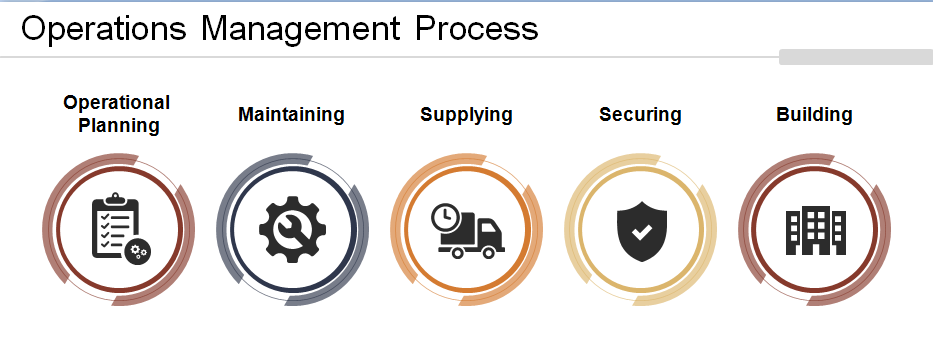
Related read: Top 20 Business Operation Templates To Define Your Organizational Structure
Any operations manager is the cornerstone of the executive suite of an enterprise. Advancing the company goals in line with the corporate strategy is what operations management is all about. It also focuses on cross-functional collaboration that brings together a robust business framework. It is this framework that each component of operations management process follows and grows with.
But it’s reality check time!
The year 2021 is upon us, and the world across has had a fair share of turmoil. That also does not excuse the fact that operations management has shifted with the consistent change of demands. The end-to-end supply of goods and services has faced blows after blows as large-scale corporate overturns swept the global economies. The challenges, it seems, will take just a little (read: a lot) while before subsiding to a non-threatening demeanor.
So what’s an operations manager to do in the meanwhile?
Well, they better fasten their seat belts as this quick guide will showcase simple techniques to make operations management a breeze in a world building itself from the ground up. Also in tow are our handy PowerPoint templates that will help you put these techniques to good use instantly. Here we go!
Operations management in 2021: Visual communication tools are key
When the humble old Material Resource Planning (MRP) system was being developed in the 1950s to handle operations, production, and inventory management, its idea was to fulfill three essential tasks.
- The first was keeping track of the raw material required to manufacture the product.
- The second was to maintain minimum resources in the inventory for optimal use.
- And the third was planning the sequence for delivery and purchase.
I am sure you are going, “But hey! I am an operations manager for a company that sells software or digital learning courses. Mine is not a shoe-manufacturing company where I need to do inventory. How do I do things differently according to the needs of my organization?”
You see, with MRP, operations management became a tandem of software working out the scope of the analog. In other words, human intervention is still the driving force behind it. So if one were to put this tandem to productive use, there has to be a link of how operations managers can process, manipulate, and store data that the software handled.
Related read: Top 10 Business Process Model Templates for Improved Operational Efficiency
That is the very basis of why visual communication tools like templates are crucial for operations management in 2021. These templates sustain the daily endless to-do list of an operations manager right from conception to realization to evaluation to evolution. When you approach everything with organized and well-presented data, you reap the best of both worlds.
On the one hand, you get to make well-informed decisions with the help of flexible data formats. On the other, you can incorporate these data formats to guide automated systems for planning resources and activities for flawless operations.
But how to apply visual communication tools to operations management?
We got you covered. And there is no rigorous brainstorming to be done here. The application of visual templates works the best on the lines of 5 V’s of operations management — Volume, Variety, Variation, Visibility, and Value. Once you align these templates to these dimensions, you get to manage operations seamlessly with the most resource-friendly outlook. Here are the techniques to apply them to your business, and some handy PowerPoint templates to get you started.
Technique 1: Lean down the volume
The volume dimension of operations management deals with the amount of a specific product manufactured to meet the demand. It entails managing the scope of output that sustains the production process.
Once the established system achieves the level of throughput as per the demand, an operations manager can increase the production. The larger goal is to manage the system capacity in line with the demand of the end-user and bringing down input costs. But how can one do it better?
Going lean is the answer. With market dynamics witnessing a colossal shift amid the pandemic, the onus is on how adaptive businesses are. Regulated outputs and cross-functional optimization can assist people managing operations with limited resources. Additionally, lean adaptation helps you incorporate minimal waste-producing activities, thereby easing the burden on resources. This also leaves more scope for strategic production and service.
Use these templates: The CXOs and the executive suite have all the right reasons to love lean. It gets things done. And it gets it done in less. Optimal performance rates improve cross-functional collaboration and planning, besides widening the scope of entering new markets.
Related read: Top 15 Lean Transformation Templates for Achieving Operational Excellence
Supported by systems that flourish with the minimum, such kind of operations management brings down the hustle for venture capital. Therefore, to ensure that each project finishes with good performance, those managing operations need to leverage the following fully-editable PowerPoint templates.
↓For reducing costs
↓To bolster productivity
↓For waste-free operations
Technique 2: Plan out the variety
With variety, an operations manager decides how many types of products and associated services the company needs to launch for better revenue. Variety opens new avenues for the company to diversify its production. Alternatively, it also gives organizations a chance to connect with customers on different levels.
Think of it as a company like Apple, which can diversify its production of consumer electronic goods. You get a phone, a tablet, a watch, and a cloud streaming service for all these devices. It won’t be a guess if we say self-driving cars will soon be striking another Apple chord with us soon (the buzz is that they will).
But what’s the catch here for an operations manager?
You see, the pull of newer markets and diversified portfolios may attract everyone in the executive suite. But for an operations manager, going for variety means more stress on the balance with volume. In other words, if there is a way to variegate types of a product, the production volume may take a hit. But since niche building and business portfolio management are the hot topics in 2021, the early bird will get the worm. But how?
Use these templates: The only solution to meet the rising demand for product diversification is to plan it out upfront. Another component that needs your attention is to include process resource requirements and output in your analysis.
The models extracted from that analysis can then further help make prudent decisions about uplifting the revenue streams by offering more to the customers. The following flexible PowerPoint templates provide a complete planning solution for well-informed operations management. Click on the one that suits your needs the best.
↓For achieving milestones with excellence
↓To expand your business with panache
↓For data-driven customer analysis
Technique 3: Experiment with variation
Optimization begets efficiency. But there are several factors that stimulate as well as limit the opportunities of optimization. Therefore, to keep up with these factors, businesses have to pivot the existing policies and procedures. The variation component of operations management deals with how operational efficiency can fluctuate to meet customer demands in exigencies.
Not only that, the variation dimension unlocks avenues of more significant revenue generation and maximization. The operations department has to orchestrate a well-coordinated strategy besides rigorous brainstorming to turn the wheel.
But how can an operations manager ensure flexible scaling in variation?
The answer lies in experimentation. In a disaster-ridden world as we see from the corporate lens, the need to churn out safer and robust protocols has grown starker than ever. But in the chase to formulate the perfect criteria for customer satisfaction, one should not lose sight of resource planning as well.
There has to be a proper control and feedback mechanism in every channel of communication that the company has deployed. Provided that, it would not take much to put your ear to the ground and channel remarkable growth strategies.
Use these templates: Championing variation in a turbulent landscape is no child’s play. But if one goes with multi-faceted approaches to resource planning and distribution, the needle will move to greener pastures.
Using meticulous market research and actionable communication techniques, an operations manager can assess the customer demands and external influence. The following handy PowerPoint templates will help achieve the desired effect in that regard. You can edit these templates with your data and prepare your team for the next brilliant move.
↓For controlled distribution of resources
↓To understand customer needs proactively
↓For averting any situation of crisis
Technique 4: Digitalize the visibility
Operational visibility deals with how elaborate and evident the working systems are in an organization. Visibility also entails the customer’s direct interaction with the operational process.
Whether e-commerce or manufacturing, operational visibility and implementation have earned their clamor thanks to technology integration. An excellent example of this is e-commerce and online retailing websites that enable a full-fledged GUI-based package tracking software facility for each customer.
But how does one ensure excellent visibility of operations?
The answer lies in agile systems. Agile operations are characterized by iterative functions that deliver value to customers without any pitfalls. The minimization of errors comes from constant testing and quick implementation. Additionally, agile systems are best suited for technological projects focused on customer satisfaction using tech support and information access.
Use these templates: Incorporating agile into traditional systems can be challenging as it is. But suppose someone on the scale of Amazon Inc is trying to overturn their operations to faster modules. In that case, it is best to gauge the available information and then process it to devise agile models.
Related read: Top 10 Agile Framework Templates For Faster Delivery
To reach up to the level of the multi-billion dollar giants, you need to take informed steps on the offset. To choose the best approach to get there, you will need the following PowerPoint templates. Feel free to put your spin on these as they are customizable to the last pixel. Download and deploy!
↓For keeping the pandemic blues at bay
↓To jack up your sales with agile methods
↓For helping your team deliver high-class performance
Technique 5: Evolve with value
The automatic routing of customer emails may not be much of an achievement to boast about. Optimized supply chains can only do so much. Outsourcing can also be a good option for unforeseen times. But when established systems keep running the way they are, the mirage of “all is well” can undoubtedly set in.
The missing piece of the puzzle, though, is monitoring feedback systems and improvement of procedures. Standardized procedures will need further analyses to generate better value for your business. This also necessitates high-power persuasion and collaboration techniques to be put into place.
Thus, the value component of operations management stems from how the system learns collectively from the resources and routines. This brings value in two dimensions — for your company and your customers.
Operations managers need to control the first with appropriate performance assessment measures supplemented with feedback loops. The second comes from constant communication and solicitation of feedback from the customer to guide technology changes.
Use these templates: A vital aspect of the value thought process is the constant use of analytics to reap data mining benefits. Properly-curated information in responsive data models eases the burden of cross-functional collaboration. Coupled with managerial brainstorming, the value prospect can bring up a significant change in financial planning and optimization.
Armed with all that knowledge, you can devise competitive policies and training frameworks for your company and employees. The following predesigned templates will help put things in order. Download and incorporate them for error-free operations.
↓For consistent feedback and monitoring
↓To optimize the financial frameworks
↓For self-learning workflows
Conclusion
Catering to the ever-changing needs of the company and the customer requires a little more than just acumen. Operations management is the most limber of business verticals that need constant planning and reinvention of policies and procedures. Therefore, it makes sense to have visual communication tools to guide your strategies for efficiency. Leveraging technology to process data and then incorporating that data into these templates can perk up your prospects in the face of crisis. The task-list for the pandemic-proof operations manager may even cross 100 points. But flexible templates will always come in handy to turn the corporate frown into a smile.





 Customer Reviews
Customer Reviews

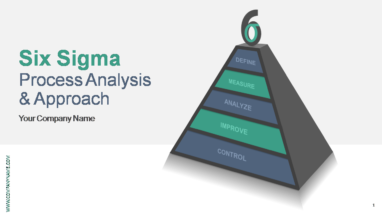

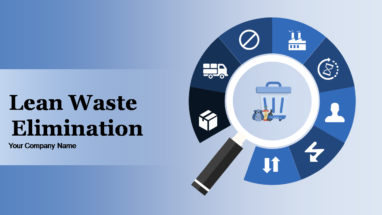

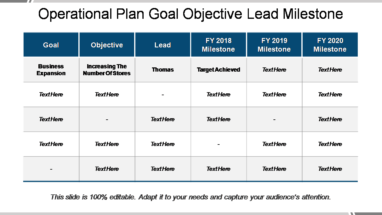








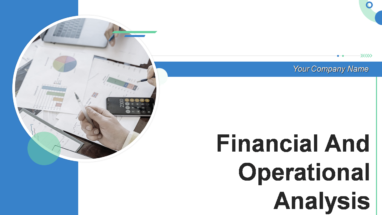





![[Updated 2023] Top 20 Six Sigma and DMAIC templates for Lean Manufacturing and Process Improvement Presentations in PowerPoint](https://www.slideteam.net/wp/wp-content/uploads/2020/07/size1001-436-13-335x146.jpg)
![[Updated 2023] Continuously Improve Your Operations With Our Top 20 Kaizen Templates In PowerPoint PPT](https://www.slideteam.net/wp/wp-content/uploads/2020/07/size1001-436-14-335x146.jpg)











